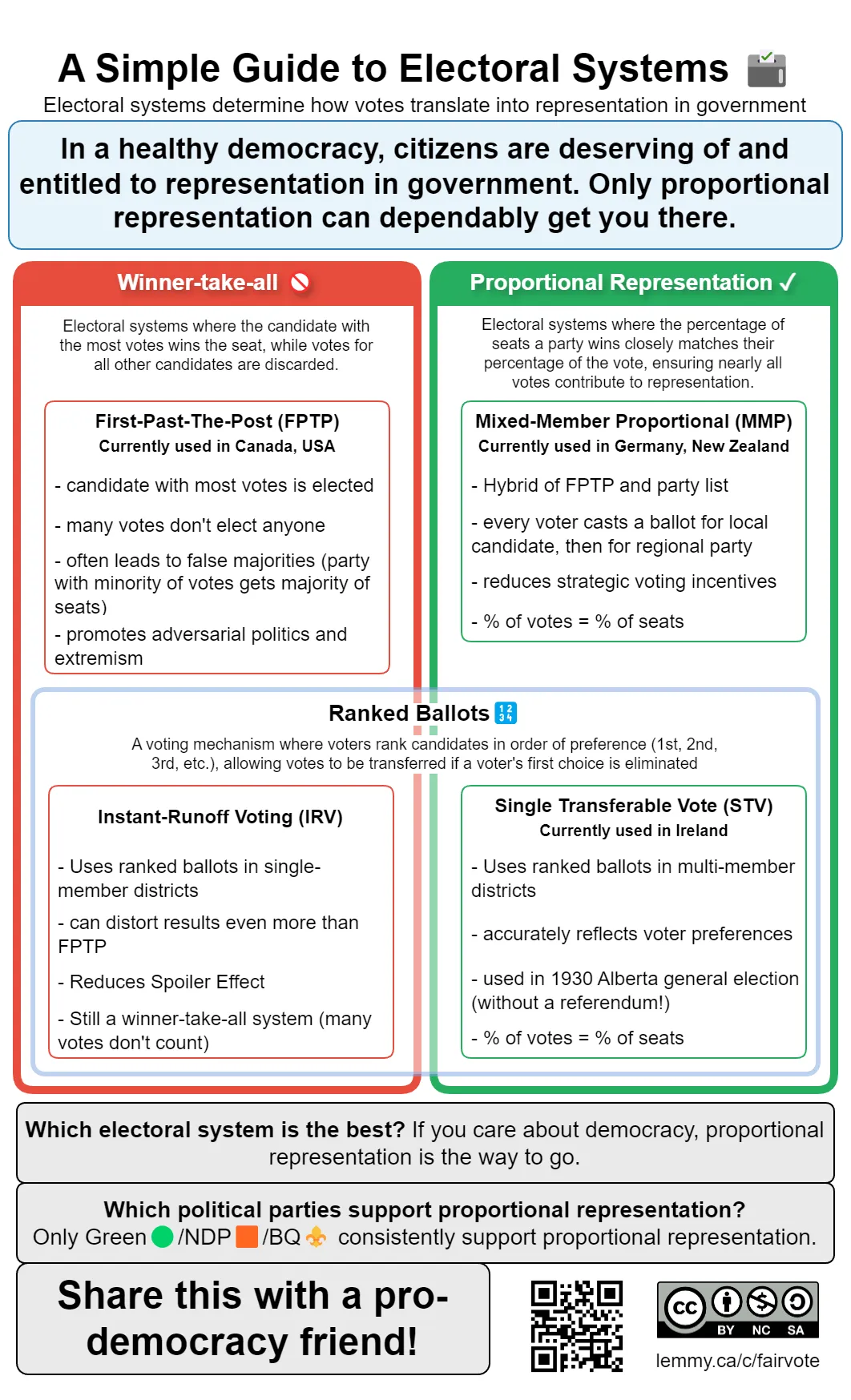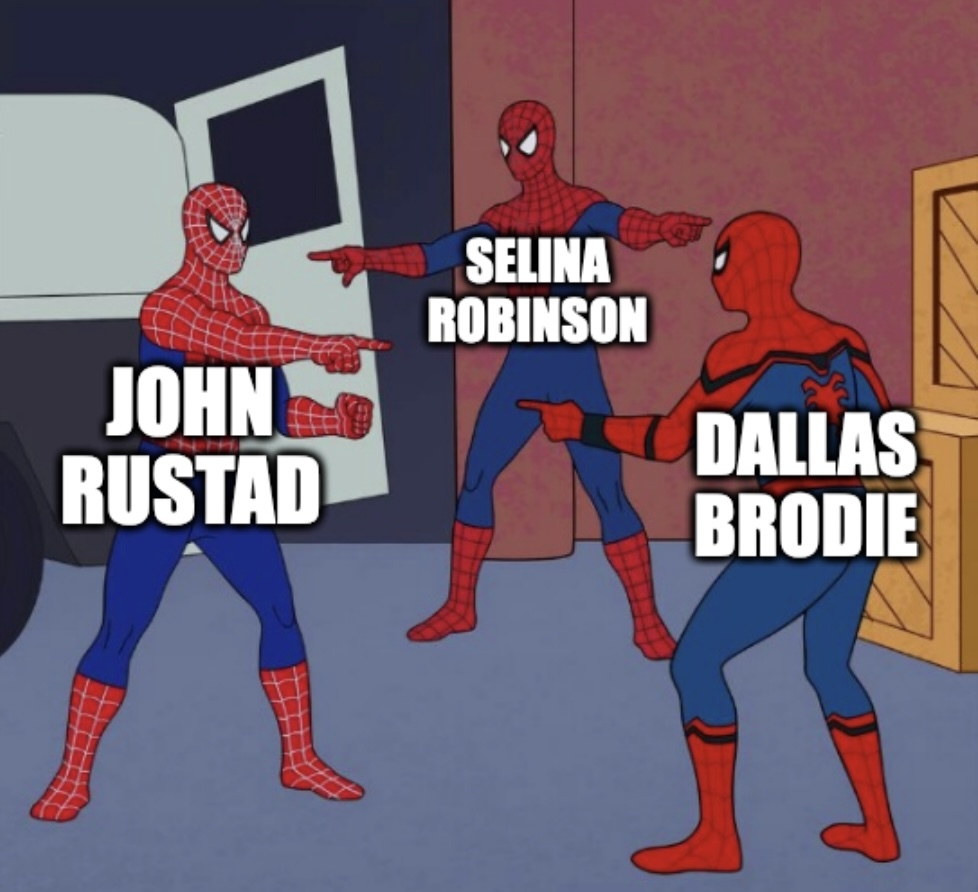Fairvote Canada
What is This Group is About?
De Quoi Parle ce Groupe?
The unofficial non-partisan Lemmy movement to bring proportional representation to all levels of government in Canada.
🗳️Voters deserve more choice and accountability from all politicians.
Le mouvement non officiel et non partisan de Lemmy visant à introduire la représentation proportionnelle à tous les niveaux de gouvernement au Canada.
🗳️Les électeurs méritent davantage de choix et de responsabilité de la part de tous les politiciens.

- A Simple Guide to Electoral Systems
- What is First-Past-The-Post (FPTP)?
- What is Proportional Representation (PR)?
- What is a Citizens’ Assembly?
- Why Referendums Aren't Necessary
- The 219 Corrupt MPs Who Voted Against Advancing Electoral Reform
Related Communities/Communautés Associées
Resources/Ressources
Official Organizations/Organisations Officielles
- List of Canadian friends of Democracy Bluesky
- Fair Vote Canada: Bluesky
- Fair Voting BC: Bluesky
- Charter Challenge for Fair Voting: Bluesky
- Electoral Renewal Canada: Bluesky
- Vote16: Bluesky
- Longest Ballot Committee: Bluesky
- ~~Make Votes Equal / Make Seats Match Votes~~
- Ranked Ballot Initiative of Toronto (IRV for municipal elections)
We're looking for more moderators, especially those who are of French and indigenous identities.
Politiques de modération de contenu
Nous recherchons davantage de modérateurs, notamment ceux qui sont d'identité française et autochtone.


